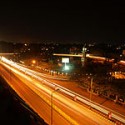Bhilai, also called Bhilai Nagar, city and major industrial centre, central Chhattisgarh state, east-central India. It is located on the South Eastern Railway about 4 miles (6 km) west of the city of Durgand some 15 miles (24 km) west-southwest of Raipur.
Bhilai was part of the Haihaivanshi Rajputs kingdom until 1740, when it passed to Maratha rule. It was administered by the British from 1853 until its merger with the Indian union in 1947. From then until the creation of Chhattisgarh state in 2000, it was in eastern Madhya Pradesh state.
Contemporary Bhilai is a planned city, divided into sectors with low-density, mostly single-story housing. A major government-operated steel plant, southeast of the city, was built in collaboration with the Soviet Union during India’s Second Five-Year Plan (1956–61). Iron ore from Dalli-Rajhara, limestone from Nandini, coal from Jharia, manganese from Balaghat, electric power from the Kosa thermal power plant, and water from the Tandula Canal, all nearby, are used in the Bhilai plant to manufacture rails and structural steel. Pig iron and billets are supplied to foundries and rolling mills located at Kumhari and other sites in central India. Other industries in Bhilai include a cement plant, a sulfuric acid plant, an ammonium sulfate plant, and sawmills. The Maitri Bagh (“Garden of Friendship”), established as a symbol of Indian-Soviet cooperation, is located near the Maroda water tanks (at the steel plant) and includes a zoo. Pop. (2001) city, 556,366; urban agglom., 927,864; (2011) city, 625,700; urban agglom., 1,064,222.







